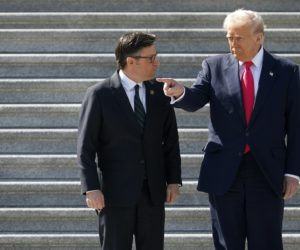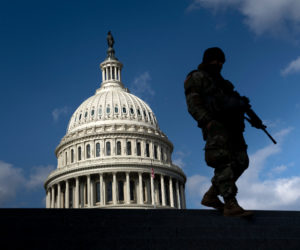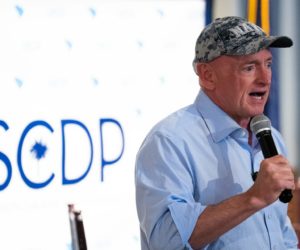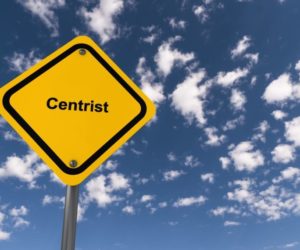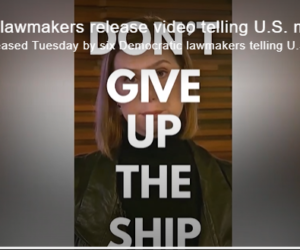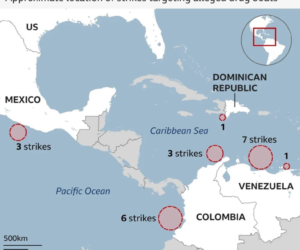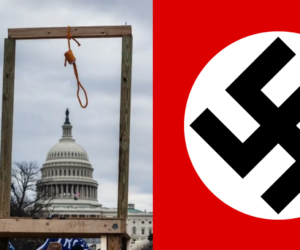
Al Drago/Getty Images
The fatal shooting of conservative activist Charlie Kirk during a speaking engagement at Utah Valley University on Sept. 10, 2025, has drawn widespread condemnation and renewed attention to the climate of political violence in the United States. To many, Kirk was not just another partisan commentator.
He was one of the most visible leaders of the young conservative movement. Kirk helped shape Republican politics on college campuses, in media and within President Donald Trump’s coalition.
To understand the significance of the attack — and why the reactions to it have been so strong — it helps to know who Kirk was, what the organization he built stood for, and the role he and his allies have played in national debates.

Mark Wilson/Getty Images
Turning Point USA founder
Charlie Kirk was a conservative activist, author and media personality who rose to prominence unusually early.
Raised in the Chicago suburbs, he made national headlines at 18 for founding Turning Point USA, a conservative youth movement. Kirk only briefly attended college. Instead, he chose to devote himself full time to conservative organizing.
That decision became central to the mythos surrounding him: He represented a choice among promising young conservatives to skip higher education in protest of the alleged left-leaning bias of universities.
Over the next decade, Kirk grew into a national figure. Beginning in 2016, he frequently spoke at Trump rallies, which helped him to build an extensive media profile.
In 2020 he published the “The MAGA Doctrine,” a bestselling book that argued in favor of nationalism and Trump’s “America First Agenda.” And his eponymous podcast – “The Charlie Kirk Show” – was downloaded more than 120 million times over the past 10 months, according to Turning Point.
Kirk’s program featured political commentary and interviews with prominent Republican personalities and politicians – guests included Tucker Carlson, Missouri Sen. Josh Hawley, and Florida Gov. Ron DeSantis. These conversations amplified Kirk’s reach well beyond student audiences.
Connecting college students and GOP
Turning Point USA was founded in 2012 by Kirk and Bill Montgomery. Kirk met Montgomery, a retired businessman, after Kirk gave a speech at a conservative youth summit in Kansas. Montgomery urged him not to pursue college but to instead dedicate himself fully to building a youth conservative movement.
Kirk described the early days as lonely: driving to campuses, handing out flyers and trying to recruit students to talk about free markets and limited government.
Turning Point drew significant financial backing from high-profile conservative donors, including Foster Friess, the Wyoming financier; the Richard and Helen DeVos Foundation; and Illinois businessman Richard Uihlein and his family foundation.
By 2024, Turning Point claimed chapters at more than 1,000 campuses, employed more than 400 staffers and had grown its annual budget to over US$8 million

Adam J. Dewey/Anadolu via Getty Images
Today, Turning Point is best known for hosting large-scale conferences. Its Student Action Summit in Florida regularly draws between 4,000 and 5,000 students and has featured appearances by GOP heavyweights including Donald Trump Jr. and Texas Sen. Ted Cruz. A 2022 gathering in Phoenix, called AmericaFest, attracted more than 10,000 attendees.
Most controversially, the group’s Professor Watchlist webpage publishes the names of academics it accuses of bias against conservatives.
Turning Point has also spun off like-minded subsidiaries, including Turning Point Action and TPUSA Faith. These organizations expand Turning Point’s reach into electoral politics and church organizing. TPUSA’s media division produces a steady stream of popular videos, livestreams and podcasts, a legacy that should ensure Kirk’s influence lasts despite his death.
Expanding national role for Turning Point
Kirk and Turning Point provided important connections for younger conservatives and the Republican Party. In 2016, Turning Point mobilized thousands of students for Trump’s campaign, and Kirk was invited to speak at the Republican National Convention.
By 2020, the organization was playing a more overt political role. Turning Point Action ran voter-registration drives in battleground states, and the group sponsored buses and advertising to bring supporters to Washington, D.C., ahead of the Jan. 6, 2021, “Stop the Steal” rally. Kirk tweeted at the time that Turning Point would be sending “80+ buses full of patriots” to the event.
While he later deleted the message and distanced himself from the violence, it underscored the group’s entanglement in the most contested moments of the Trump era.
Kirk also acted as a crucial media surrogate for Trump. He used his podcast, social media, and speaking tours to amplify Trump’s message and attack critics. He was an early and persistent promoter of Trump’s baseless claims of voter fraud in the 2020 election, helping translate them for younger conservative audiences.
Spreading misinformation, inflaming tensions
Critics argued that Kirk thrived on outrage and intimidation rather than debate.
The Professor Watchlist has been denounced by faculty associations as a blacklist that chills academic freedom. Journalistic investigations by outlets such as The New Yorker raised questions about Turning Point’s finances, including allegations of blurred lines between nonprofit educational work and partisan campaigning.
Kirk was criticized for spreading misinformation, such as false claims of voter fraud in the 2020 election and misleading statements about COVID-19 vaccines and mask mandates. He suggested that public health measures were a form of government control, rhetoric that public health experts argue undermined trust during a crisis.
More broadly, his sharp attacks on political opponents – he framed them not merely as wrong but as dangerous – drew accusations that he fueled polarization and inflamed tensions on American college campuses and beyond.![]()
Stephanie A. (Sam) Martin, Frank and Bethine Church Endowed Chair of Public Affairs, Boise State University
This article is republished from The Conversation under a Creative Commons license. Read the original article.


